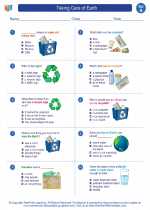Taking Care of Earth -> surface tension
Surface Tension
Surface tension is the property of a liquid that allows it to resist external forces. It is the result of the cohesive forces between the liquid molecules at the surface. This cohesive force creates a "skin" on the surface of the liquid, which gives it the ability to support objects and form droplets.
Causes of Surface Tension
Surface tension is caused by the imbalance of intermolecular forces at the surface of a liquid. The molecules at the surface experience a net inward force due to the unequal attraction of neighboring molecules. This creates a tension that minimizes the surface area of the liquid.
Effects of Surface Tension
Surface tension is responsible for several phenomena, including:
- Droplet Formation: Surface tension causes liquid to form spherical droplets, as this shape minimizes the surface area for a given volume of liquid.
- Capillary Action: Surface tension allows liquids to move up narrow tubes or be drawn into porous materials, a phenomenon known as capillary action.
- Buoyancy: Surface tension can support the weight of small objects, such as insects walking on water, due to the surface tension of the water's surface.
Measuring Surface Tension
Surface tension can be measured using various methods, including the drop weight method, the capillary rise method, and the maximum bubble pressure method.
Applications of Surface Tension
Surface tension has numerous practical applications, such as in the formation of soap bubbles, the operation of inkjet printers, and the behavior of surfactants and detergents.
Study Guide
Here are some key points to remember about surface tension:
- Surface tension is the result of cohesive forces between liquid molecules at the surface.
- It is caused by the imbalance of intermolecular forces at the surface of a liquid.
- Surface tension can be observed in phenomena such as droplet formation, capillary action, and buoyancy.
- There are various methods for measuring surface tension, including the drop weight method and the capillary rise method.
- Surface tension has practical applications in everyday phenomena and various industries.
Understanding surface tension is important for understanding the behavior of liquids and their applications in our daily lives.
[Surface Tension] Related Worksheets and Study Guides:
.◂Science Worksheets and Study Guides First Grade. Taking Care of Earth

 Worksheet/Answer key
Worksheet/Answer key
 Worksheet/Answer key
Worksheet/Answer key
 Worksheet/Answer key
Worksheet/Answer key
 Vocabulary/Answer key
Vocabulary/Answer key
 Vocabulary/Answer key
Vocabulary/Answer key
